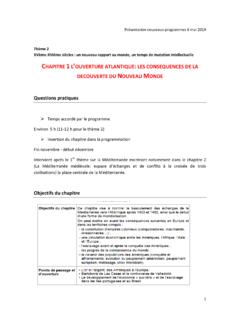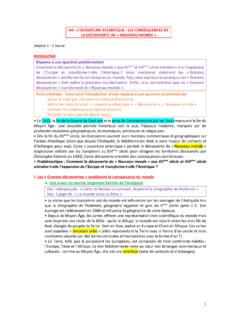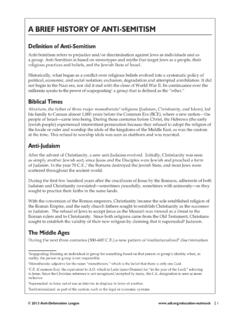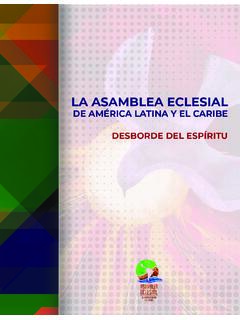Transcription of Columbian Exchange DBQ - Paulding County School District
1 Columbian Exchange DBQHow did culture in the Americas change as a result of exploration? What were the consequences of the Columbian Exchange ? Key Concepts/Definitions: Columbian Exchange : sharing of plants, animals, diseases, human populations, technology, and ideas between the Western and Eastern Hemispheres as a direct result of Columbus arrival to the Americas in 1492. Triangular Trade: trade between Africa, Europe and Americas of slaves, manufactured goods, and raw goods New World: the Americas Old World: Europe, Asia, Africa Encomienda system.
2 System of forced labor which Native Americans worked on Spanish-owned estates Hook Decide where the plants and animals originated (the Americas, Europe, Asia, and Africa) BackgroundThe term, Columbian Exchange refers to the Exchange of biological commodities(see below) and ideas between the Old World and the New World as a result of the European voyages of exploration that started with Christopher Columbus. Biological commodities means living things, or things that were once alive. Examples would include domestic animals, agricultural products, microbes (bacteria and viruses), and even people some of whom (slaves) were actually treated as commodities to be bought and sold.
3 Prior to 1492, many of these biological commodities had never crossed the ocean. When the two hemispheres finally came into contact, the Columbian Exchange would dramatically and permanently affect human societies and the natural environment on both sides of the ocean. does the term Columbian Exchange mean? whom is the Columbian Exchanged name for? is a biological commodity type of people were treated as commodities? to the reading many commodities never crossed the ocean prior to 1492, what does this mean and state why you believe that to be true.
4 At least 3 ways the Columbian Exchange permanently and drastically affected the world?Document 1 The Arrival of Europeans The arrival of Christopher Columbus in the Caribbean in 1492 had a tremendous impact on the future of that region. The passage below describes that arrival. It is taken from an abridgement of Columbus personal journal made by Bartholome de las Casas. In order to win the friendship and affection of that people, and because I was convinced that their conversion to our Holy Faith would be better promoted through love than through force, I presented some of them with red caps and some strings of glass beads which they placed around their necks, and with other trifles of the insignificant worth that delighted them and by which we have got wonderful hold on their affections.
5 From the diary of Christopher Columbus during his first voyage of exploration. Saturday, 13 October. [1492] At daybreak great multitudes of men came to the shore, all young and of fine shapes, very handsome; their hair not curled but straight and coarse like horse-hair, and all with foreheads and heads much broader than any people I had seen; They came loaded with balls of cotton, parrots, javelins, and other things too numerous to mention; these they exchanged for whatever we chose to give them. is the topic of this document?
6 Are two excerpts from a diary or journal. Who is being quoted in both entries? to the first quote what were the Europeans planning for the natives? How did he intend to accomplish his goal? did the Europeans describe the natives? Why do you believe this was important information for the Europeans? reading both of these quotes how do you think the Europeans viewed the natives? Site evidence to support your answer. Document 2 The Impact of Disease The charge of genocide is largely sustained by figures showing the precipitous decline of the Indian population.
7 Although scholars debate the exact numbers, in Alvin Josephy's estimate, the Indian population fell from between fifteen and twenty million when the white man first arrived to a fraction of that 150 years later. Undoubtedly the Indians perished in great numbers. Yet although European enslavement of Indians and the Spanish forced labor system extracted a heavy toll in lives, the vast majority of Indian casualties occurred not as a result of hard labor or deliberate destruction but because of contagious diseases that the Europeans transmitted to the Indians.
8 The spread of infection and unhealthy patterns of behavior was also reciprocal. From the Indians the Europeans contracted syphilis. The Indians also taught the white man about tobacco and cocaine, which would extract an incalculable human toll over the next several centuries. The Europeans, for their part, gave the Indians measles and smallpox. Since the Indians had not developed any resistance or immunity to these unfamiliar ailments, they perished in catastrophic numbers. Source: The Crimes of Christopher Columbus Dinesh D' is the topic being discussed in this document?
9 Term genocide should be familiar from the holocaust, what is the words meaning? at the chart, what information is the chart showing us? Source is from a book The crimes of Christopher Columbus Why do you believe the author chose that title for the book? picture is an original drawing from the Mesoamerican natives. Describe what you see in the photo. author shows bias in their writing. What do you believe their bias to be? Provide support. were the first slaves in America, And this took its toll on the native population.
10 But what was the number one killer of the natives? Why did the natives die form such things. Document 3 Agricultural Change Exchanging crops proved to be a far more intricate, involved process than ever could have been imagined at the time. Remarkably, the people of the Americas realized that crops with higher caloric value could not only feed more people, but also allowed people to work harder because they were more energized. This led to an adoption of American crops by European peasantries that changed entire cuisines in various cultures and spread rapidly through the Americas, Europe and finally, Africa.


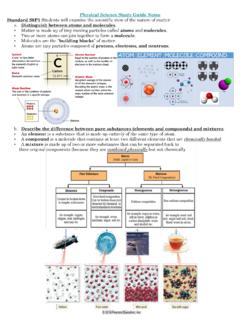
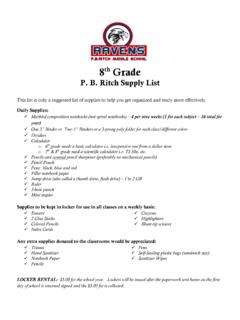



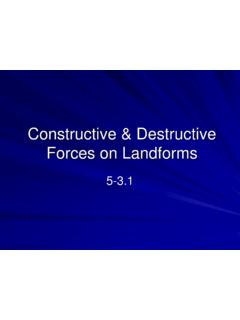

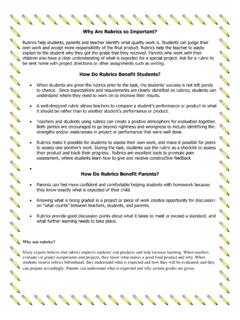
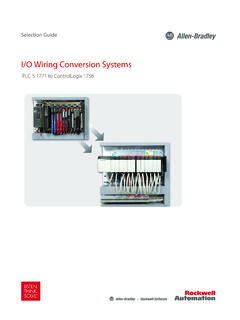
![The Requerimiento [Requirement], Council of Castile, 1510 ...](/cache/preview/3/b/c/3/4/1/d/9/thumb-3bc341d950cc28e0e5681bf2359ea426.jpg)
